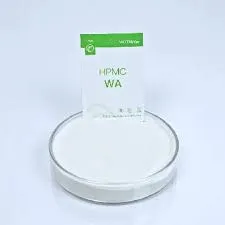
Th12 . 21, 2024 22:37 Back to list
how is hydroxyethyl cellulose made
Understanding the Production Process of Hydroxyethyl Cellulose
Hydroxyethyl cellulose (HEC) is a non-ionic, water-soluble polymer derived from cellulose. Known for its thickening, emulsifying, and stabilizing properties, HEC is widely used in various industries, including pharmaceuticals, cosmetics, construction, and food. Understanding how hydroxyethyl cellulose is made can provide insights into its applications and benefits.
Raw Materials and Initial Preparation
The primary raw material for the production of hydroxyethyl cellulose is cellulose, which is a natural polymer found in the cell walls of plants. Cellulose can be obtained from various sources, including wood pulp, cotton, and other plant materials. The first step in the production process involves treating the cellulose to ensure it is pure and suitable for modification. This often includes bleaching and drying the cellulose to remove any impurities and increase its reactivity.
Etherification Process
Once the cellulose is prepared, the next step is the etherification process, which is critical for converting cellulose into hydroxyethyl cellulose. This is typically done using ethylene oxide in the presence of an alkaline catalyst. The alkaline conditions facilitate the opening of the epoxide ring of ethylene oxide, leading to the formation of hydroxyethyl groups attached to the cellulose backbone.
The etherification reaction is usually accomplished in a batch process. The cellulose is first slurried in an aqueous solution, and the required amount of ethylene oxide is then introduced. The mixture is maintained at a controlled temperature to ensure the reaction proceeds efficiently. The duration of the reaction can vary depending on the desired degree of substitution and the viscosity of the final product.
Purification and Drying
After the etherification process is complete, the resulting hydroxyethyl cellulose is then subjected to a purification process to remove unreacted reagents, by-products, and other impurities. This is typically achieved through water washing or other solvent extraction techniques. Purification not only enhances the quality of the final product but also ensures that it meets the necessary regulatory standards for its intended applications.
how is hydroxyethyl cellulose made

Following purification, the hydroxyethyl cellulose is dried to remove excess moisture. The drying process may involve spray drying or vacuum drying methods to achieve the desired moisture content without degrading the polymer. The dried HEC is then ground into a fine powder to facilitate packaging and handling.
Quality Control
Quality control is a fundamental part of the production process for hydroxyethyl cellulose. Various tests are performed to confirm the product's chemical structure, molecular weight, and degree of substitution. These parameters are crucial as they directly affect the solubility, viscosity, and overall performance of the HEC in different applications. Additionally, test batches may be produced for customer evaluations, ensuring that the final product meets specific application requirements.
Applications of Hydroxyethyl Cellulose
Hydroxyethyl cellulose's unique properties make it suitable for a myriad of applications. In the pharmaceutical industry, it serves as a thickening agent and gelling agent in ointments and topical formulations. In cosmetics, it is used to stabilize emulsions and enhance product viscosity. The construction industry leverages HEC as a thickener for paints, adhesives, and mortars, improving their application properties and performance.
Furthermore, HEC acts as a food additive, functioning as a stabilizer and emulsifier in various food products. Its ability to retain water makes it essential for creating moisture-retentive formulations, contributing to the texture and mouthfeel of food items.
Conclusion
The making of hydroxyethyl cellulose is a complex yet fascinating process that highlights the intersection of natural materials and modern chemical engineering. From its origins in plant cellulose to its transformation through etherification and purification, HEC exemplifies the advancements in material science. Its diverse applications across various industries underscore the importance of understanding its production process, emphasizing the critical role it plays in our everyday lives. Whether in pharmaceuticals, cosmetics, or food production, hydroxyethyl cellulose continues to demonstrate its versatility and significance.
-
Versatile Hpmc Uses in Different Industries
NewsJun.19,2025
-
Redispersible Powder's Role in Enhancing Durability of Construction Products
NewsJun.19,2025
-
Hydroxyethyl Cellulose Applications Driving Green Industrial Processes
NewsJun.19,2025
-
Exploring Different Redispersible Polymer Powder
NewsJun.19,2025
-
Choosing the Right Mortar Bonding Agent
NewsJun.19,2025
-
Applications and Significance of China Hpmc in Modern Industries
NewsJun.19,2025







